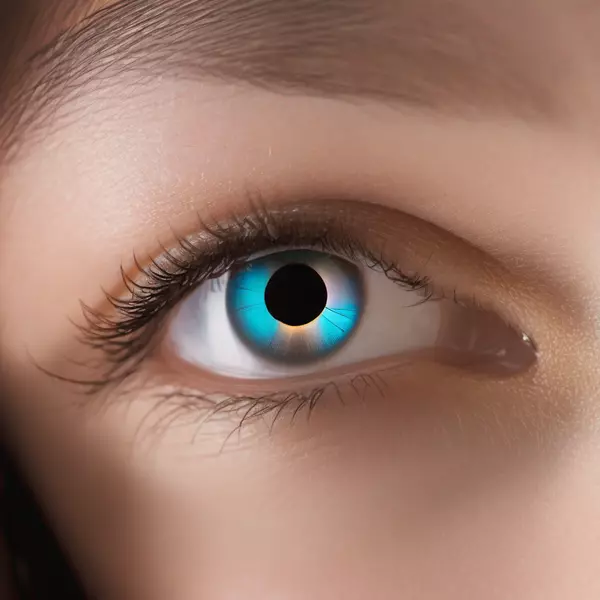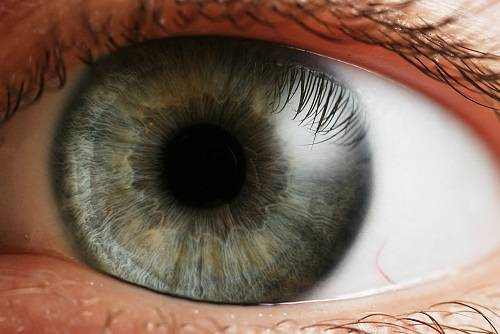Rigid Gas Permeable (RGP) contact lenses, which are also called Oxygen Permeable lenses, are a type of durable plastic contact lens that enables oxygen to reach the eyes. These lenses offer exceptional visual clarity and are primarily intended for those with vision impairments.
Rigid Gas Permeable (RGP) lenses have the unique feature of retaining their shape even when blinked, resulting in improved vision clarity. These lenses are effective in addressing various vision issues and have the potential to delay the advancement of specific eye conditions like nearsightedness.
Advantages and disadvantages of RGP lenses
These lenses offer excellent visual clarity and durability. They have a lower risk of causing infections compared to soft lenses. Nevertheless, they may require some time to adjust to and need careful handling because they are more rigid and less flexible. Despite these small drawbacks, RGP lenses can be a great option for individuals who prioritize their eye health and clear vision.
Understanding RGP Lens Fitting Process
Choosing to wear Rigid Gas Permeable (RGP) lenses comes with the advantages of clear vision and maximum comfort. However, these benefits can only be realized if the lenses fit perfectly. This article will highlight the importance of a good fit and provide guidance on how to achieve it.
Importance of a proper RGP lens fitting
A highly tailored RGP lens fitting is critical for both initial comfort and long-term eye health. Incorrectly fitted lenses can cause discomfort, blurred vision, or even potential corneal damage.

Step-by-step guide to RGP lens fitting process
The RGP fitting process involves a thorough eye examination, lens selection based on eye measurements, trial fittings and adjustments before finalizing the prescription. This precision ensures maximum comfort and clear vision. Always consult with an optometrist to ensure you get the best fitting RGP lenses specific to your eyes.
RGP Lens Selection and Measurement
Whether you’re an experienced lens wearer or a beginner, understanding the process of Rigid Gas Permeable (RGP) lens selection and measurement is beneficial.
Keep in Mind: Several factors can impact the fitness and comfort of your RGP lens. Elements such as corneal curvature, diameter, power, and your lifestyle needs should be considered.
Measured to Fit: Techniques like keratometry, topography, or trial lens fitting help determine the best fit for RGP lenses. These tools grant eye care professionals vital data about corneal shape and size in order to provide comfortable, clear vision with your RGP contact lenses.
Assessing RGP Lens Parameters
Fitting Rigid Gas Permeable (RGP) lenses can be an exact science, requiring specialized knowledge and precise measurements to ensure comfort and functionality.
Proper Measurement: Determining the base curve (BC) is crucial in lens fitting. The BC should closely match the curvature of the eye for a comfortable fit, while the diameter should cover the corneal area adequately without discomfort.
Customizing Lens Fit: It’s essential to understand that each patient’s eyes are unique. Therefore, assessing lens parameters through careful observation and measurement ensures that the RGP lens fits a patient perfectly. This tailored approach helps to enhance vision clarity and minimizes potential discomfort or risk of complications.
RGP Lens Insertion and Removal Techniques
When it comes to using Rigid Gas Permeable (RGP) contact lenses, mastering the insertion and removal techniques is crucial. Here are some pointers to help you.
Proper techniques for inserting RGP lenses
Step 1: Hygiene First: Before handling your lenses, ensure your hands are thoroughly clean.
Step 2: Placement: Take the lens, ensure it is clean, then gently place it on the tip of your index finger.
Step 3: Application: Look upwards and cautiously apply the lens to the lower part of your eye.
Tips for safe and easy removal of RGP lenses
Blinking method: One common way of removing these lenses is the blinking technique. Simply look down, lightly touch your eyelid, then slowly blink. This motion should make your lens pop out.
Lens Removal Tools: For those finding it hard to use the blinking method, handy lens removal tools are available on the market. Ensure you follow instructions for use diligently to avoid harm.
Conclusion
Fitting Rigid Gas Permeable (RGP) lenses is an intricate procedure that requires expertise and precision. A considerable knowledge of the cornea’s shape and its interaction with the lens is crucial for successful fitting and wear.
- Central and Peripheral Alignment: Achieving the balance between central and peripheral alignment is essential. This alignment ensures optimal lens stability, comfort, and vision.
- Fit Assessment: Regular fit monitoring helps mitigate potential corneal damage. Slight changes in fitting can make a big difference over time.
- Education: Educating your patients about lens care, insertion, removal, and regular follow-ups will enhance compliance and stave off potential issues.
Adhering to these considerations leads to successful usage of the RGP lens, offering a rewarding experience to users.





